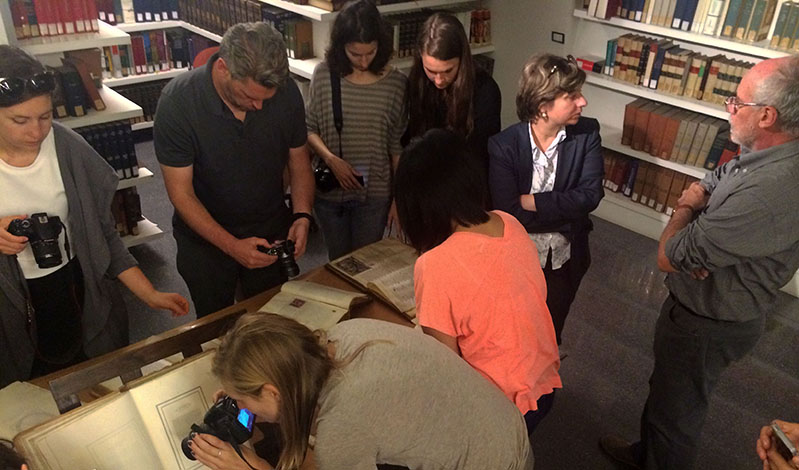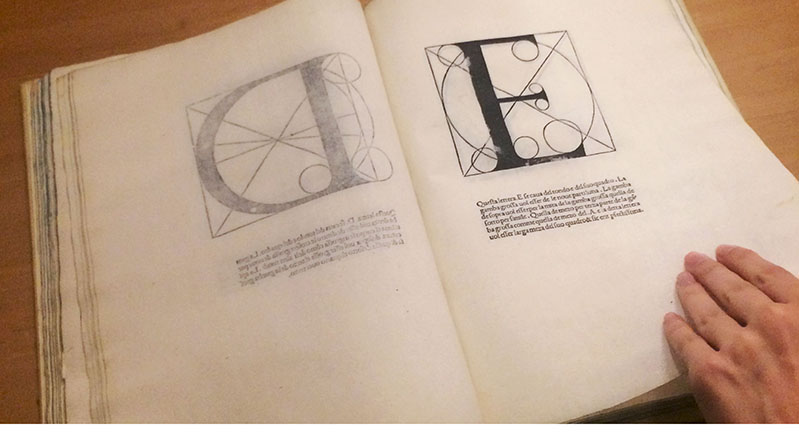Rome Day IV: Zennaro’s Walking Tour
Photographs by Hannah Bruce
By Hannah Bruce
As we left Santa Chiara this morning with Mauro Zennaro, we stepped away from the notions of 20th century ideas that Steve Heller spoke of yesterday and took a step (or 50) back to the tactility of stone inscriptions and the humor of vindictive 17th century sculptors. Both natural evolution by happenstance and intentional change in the landscape of common era type have made themselves evident in our studies thus far. The relationship between these two forces isn’t easily named but forceful nonetheless. In the same way we traded Latin numerals for Arabic ones, the humanistic hand of antiquity became stale and blackletter became gauche.
The smattering of things we saw on our tour reinforced a similar concept Mauro introduced during our first time with him on Tuesday: the way we read things is vital to our understanding of them.
We squinted through understanding the visual nature of math with Roman numerals, and the forces became even clearer during our time gawking at centuries-old books at the Angelica Library. First editions of Dante’s Inferno and Bodoni’s Typographic Manual, some of the first examples of illustrations in books, and illuminated gospel manuscripts on vellum all bore witness to changes over time in what we read, the way we read, and the manner in which we understand, i.e. what we’re chewing up, how we’re spitting it out, and how that influences what we put in our mouths next.
“The lettering on buildings tell a story but you have to know the code,” Mauro told us as we stood in front of the Pantheon. While the code is necessary in reading and understanding the story, for centuries designers have been tasked with adapting the code to the always-changing story. Testaments such as these inscriptions and books help us as designers in navigating a code change when the story calls for it.




